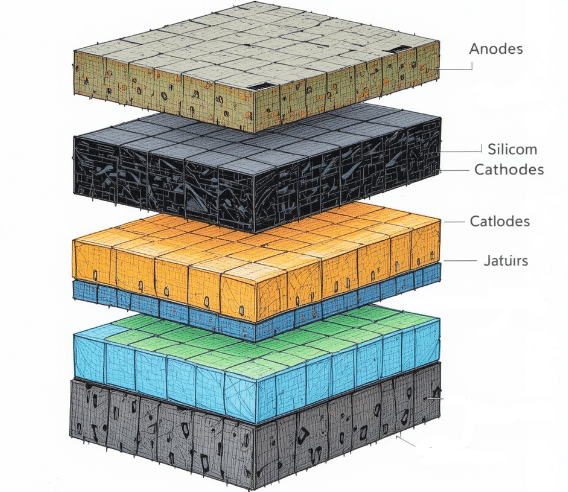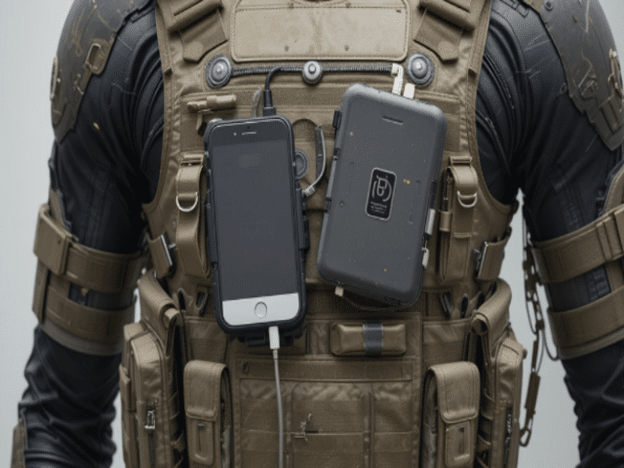Silicon-Carbon Batteries: The Future of Cellphone Power
The last few generations of cellphones, both basic and smartphones have always shipped with lithium-ion batteries as the obvious power source. However, silicon-carbon batteries are soon going to rattle the status quo. Cellphone manufacturers will soon have to offer consumers more than a new OS version, extra megapixels, and more processor cores during their flagship launch events. It finally sounds like some fair game from a consumer perspective, but what’s the logic behind silicon-carbon batteries? Why are they going to be the next game-changer?
Lithium-ion vs Silicon Carbon
For starters, it's good to visualize lithium-ion as a chemical process, and not necessarily a material or a mythical type of mineral. In other words, in such cellphone batteries, the lithium-ion transfer occurs between a graphite anode (negative electrode) and a cathode made up of lithium and another metal. In traditional batteries, the most commonly used cathode metals are cobalt, nickel, manganese, cobalt, and various oxides of these metals. Eventually, saying “lithium-ion batteries” is just a sensible alternative to calling them “lithium-ion transfer technology batteries.”
Lithium, cobalt, and nickel are the typical materials found in everyday cellphone batteries. These have so far worked effectively but they present an environmental problem. Nickel and cobalt especially leave a huge environmental footprint because they are non-renewable, making them a stop-gap solution in the energy industry. This is why it is considered more sustainable to have silicon as an alternative to metals like graphite. Silicon is anyway a more abundant resource compared to cobalt and graphite. Silicon-carbon batteries are also considered safer because they eliminate the risk of quick overheating.
With silicon-carbon batteries, silicon content is introduced into the cathode material composition as the graphite material is reduced. Manufacturers can apply different compositions, and in some cases, the silicon can fully replace the graphite.

Advantages of silicon use in phone batteries
Silicon carbon batteries provide higher energy storage capabilities than traditional lithium-ion packs. Cellphone manufacturers can in 2025 and onwards offer batteries with higher mAh than a battery of similar dimensions. With that, you can now have slimmer phones without compromising on battery life. The same benefits apply in the motoring and robotics industry, where big brands like Tesla and BYD have trained their crosshairs in the last few years.
Honor Magic 6 Pro will ship with silicon-carbon batteries
Huawei is one of the first cellphone manufacturers to explore silicon-carbon battery types for their smartphones. As much as there is a lot of excitement surrounding the Honor Magic 6 Pro, it remarkably wasn't the first on their list to have a silicon carbon battery. Some trials had been made using the Honor Magic 5 Pro in 2024, exclusively for the Chinese market. The decision to have 2025’s flagship, the Magic 6 Pro available for all the other markets is a testament to how successful its reception was.
How smaller batteries add flexibility in phone design
Small batteries free up space for other phone components
Having a smartphone dedicating most of its physical space to battery containment leaves less space for other crucial components. With less space consumed, there is more compartment space for better cameras that have advanced camera sensors. You can also have state-of-the-art lens and zooming capabilities. In the 2010s, phones would have easily achieved professional-grade photography but that would have meant carrying around phones the size of clay bricks.
More avenues for cooling features
More space in a phone casing means there is improved thermal management. With the right thermal management architecture, phone users enjoy extended gameplay without overheating. Enhanced cooling and temperature control augers well with advanced chipsets in handheld devices. Especially when people use power-hungry applications all at once, cooling features will be a plus when you need to have advanced processors. The use of AI in modern phone apps also foreshadows a greater need for increased processing power in the future.
Foldable designs
Slimmer folds and rollable screens will be more widespread because of silicon-carbon batteries. These will provide thinner and more compact designs that leave the cellphone manufacturers more avenues to display their creativity to the end consumers. We are likely to see very innovative display types in the near future.
Military use
With the war philosophies quickly evolving, most battlefields will require soldiers to carry a lot of energy supply without the burden of extra weight. There is a push to have all-in-one energy packs servicemen can use to charge their electric hardware. Soldiers often carry night vision equipment, radios, navigation nodes, and varying wearables for mission-specific needs.

The US military has for example made strides towards developing the Conformal Wearable Battery (CWB). The tech works as a backpack or a vest that soldiers carry with them and use as a multipurpose power source. Think along the lines of a wearable vest that can charge all the communication gadgets, sensors, and visual equipment modern soldiers need while on the front. Wearable battery packs in the US military are a long-term project developed by the DoD’s Manufacturing Technology (ManTech) program. The program pulls together the best of industrial partnerships to achieve its tech needs more efficiently.
Some challenges with silicon-carbon technology so far
Silicon is known to swell during charging as the arrangement matrix absorbs lithium ions during its charging cycle. The expansion process can cause mechanical stress to the whole battery structure. Even gradual but substantial volume change is enough to disrupt the electrical contact and in time reduce a battery’s lifespan.
Furthermore, in order to get the full benefits, researchers suggest that silicon anodes need to work in combination with equally higher-grade cathode materials. The earliest versions of silicon-carbon batteries simply continued using the same cathodes that didn’t match in storage capacity. In retrospect, working with high-capacity silicon anodes is what made researchers explore the possibility of developing new alternatives for cathode materials. This explains why silicon-carbon batteries are successfully evolving at the rate they are.
Silicon-carbon battery technology remains a welcome rule-breaker
In a nutshell, when making high-performance batteries, factories often face a tradeoff between energy density, cycle life, shelf life, and charging or discharging rates. When battery manufacturers implement silicon compounds in their batteries, there is generally an overall improvement in all these metrics. Having lightweight, fast charging and long-life silicon-carbon batteries is only likely to create gadgets with a whole new range of applications.
